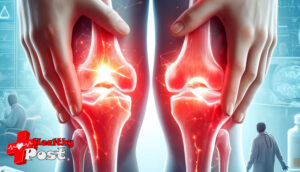
Loud Pop in Knee Followed by Pain: Causes, Symptoms, and Treatment Options
Knee injuries are common, especially in athletes and active individuals. You might notice sudden pain, swelling, or difficulty moving your knee. A loud popping sound followed by pain can be alarming. Recognizing what it might mean can help you act fast and avoid serious damage. Around 25% of sports injuries involve the knee, and many cause discomfort that affects daily tasks. Ignoring these symptoms could lead to long-term problems. Knowing the difference between minor discomfort and a serious injury is key to staying healthy. Let’s know about loud pop in knee followed by pain.
Causes of a Loud Pop in the Knee Followed by Pain
Common injury mechanisms
Any sudden move can lead to a loud pop and pain in your knee. Falling or getting hit during sports can cause this instantly. Twisting your knee unexpectedly can also produce similar sounds and discomfort. Overuse from repetitive motions might cause damage over time, leading to a pop and pain later. These activities stress your knee’s structures and may cause injury.
Typical structural injuries
- Meniscus tears: These are small cartilage pieces inside your knee that cushion your bones. A sudden twist often tears the meniscus, causing a pop and pain.
- Ligament injuries:
- ACL (anterior cruciate ligament): Tears here happen during sudden stops or turns.
- MCL (medial collateral ligament): Usually injured by direct impact from the side.
- PCL (posterior cruciate ligament): Sometimes torn during a fall on a bent knee.
Damaged ligaments cause instability, swelling, and sharp pain.
Less common causes
- Cartilage damage or chondromalacia: Damaged cartilage may produce grinding sounds and soreness.
- Tendon ruptures: Tendons connecting muscles and bones can tear, creating loud snaps and pain. These injuries may cause difficulty moving or bearing weight.
Recognizing Symptoms and When to Seek Medical Attention
Immediate signs and symptoms
- Sharp pain at the moment of injury
- Swelling or tenderness
- Feeling of looseness or instability in the knee
- Limited movement or inability to fully straighten or bend
- Hearing a loud pop during injury
Red flags indicating urgent care
- Severe pain that doesn’t ease
- Cannot stand or walk
- Visible deformity or bones out of place
- Suspected fracture or open wound
- Intense pain that worsens over time
If any of these signs appear, seek emergency help immediately.

Diagnostic processes
Doctors examine your knee by feeling and moving it. They check for swelling, tenderness, and stability. Imaging tests are crucial for accurate diagnosis:
- X-ray: Finds fractures or bone injuries.
- MRI: Shows torn ligaments, cartilage damage, or meniscus tears.
- Ultrasound: Assesses soft tissue injuries in real time.
These tests help doctors find the exact cause of your symptoms.
Treatment Options for Knee Injuries with Loud Pop and Pain
Immediate first aid
Right after injury, follow the RICE method:
- Rest: Keep weight off your knee.
- Ice: Apply cold packs to reduce swelling.
- Compression: Wrap knee with an elastic bandage.
- Elevation: Keep your leg raised above heart level.
This approach helps lessen pain and prevents further damage.
Non-surgical management
Most minor injuries heal with physical therapy. Strengthening exercises improve stability and reduce future risks. Pain medications like NSAIDs can help with discomfort. Gentle stretching and weight-bearing activities are useful once swelling diminishes.
Surgical interventions
More serious injuries may need surgery.
- Arthroscopy: A tiny camera repairs or removes damaged tissue.
- Ligament reconstruction: Replaces torn ligaments with grafts.
Recovery usually involves physical therapy and patience. Surgery improves joint function and stability.
Post-treatment recovery and prevention
Follow your rehab plan carefully. Strengthening muscles around your knee adds support. Gradually return to sports or heavy activity. Wear supportive gear during exercise. Regularly doing knee exercises helps prevent future injuries.
Complications and Long-Term Effects
Potential complications
- Chronic instability, if knees remain weak
- Development of osteoarthritis over time
- Re-injury if you rush back too soon
Untreated injuries can cause long-term pain and mobility loss.
Monitoring and follow-up care
Stick to your rehab schedule and attend follow-up appointments. Keep your doctor updated on your pain and progress. Consistent care ensures the best recovery and reduces re-injury chances.
Conclusion
A loud pop in the knee followed by pain can signal serious injury or minor damage. Recognizing the symptoms early is vital to prevent long-term problems. If pain, swelling, or instability persists, see a healthcare professional. Proper diagnosis and treatment restore your knee’s health and prevent future issues. Always prioritize knee health by following recommended rehab steps and doing preventive exercises. Doing so keeps you moving comfortably and maintains your quality of life for years to come.


One thought on “Loud Pop in Knee Followed by Pain: Causes, Symptoms, and Treatment Options”